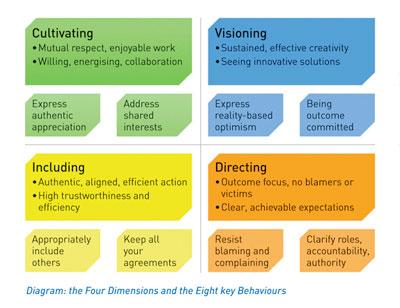Project management’s fatal flaw
“I began to think of a metaphor with a magnetic field. Iron filings are good tracers for magnetic fields, what is the tracer for context? The answer is behaviour, because context changes behaviour,” he notes.
He set about designing a behavioural assessment that would measure eight key behaviours, which would in turn represent the social context of the project team and help create a high performance context. “What we’re talking about is taking projects, finding the behaviours that define the context of low risk, high performance projects, doing some work to change them and they change the context with it.”
Examining team behaviour
Learning of his breakthrough, NASA approached him to apply his knowledge to its working teams. Since 2003 more than 1,200 NASA teams, mostly project and functional engineering teams, have voluntarily used these measurements to assess their behaviour and change deviant social context. It works because it is ‘soft’ measurement in hard data for those teams that need to think of behaviour in a more structured way, says Charlie.
“My publisher decided to market [his book How NASA Builds Teams] as a technical book; that way, we could get more technical people to recognise how behaviour can affect their performance,” he says. “Most technical people, when they understand that they have a problem, want to know about it and fix it.”
Charlie admits it is not easy to identify team dysfunction until after a failed project is examined, but his online team development assessment can measures it directly. “On average, most teams improve their performance by 5% for each time they undertake assessment with a process that typically takes 15 minutes online,” he states.
The survey ranks eight behaviours of the team against benchmark data. A high performing team will exhibit the eight behaviours and help drive and shape a high performance context that sustains those behaviours, in a feedback loop.
Low performing teams will identify their weaknesses. After doing the assessment, “they get the actions, they sit down themselves, they define the action items for what they’re going to do that fits their workplace. They haven’t noticed it but I’ve made them the team builders,” Charlie says of the collective self-empowerment that occurs to effect change.
The value of being valued
If Charlie had his time again, what’s the one thing he would have done to prevent the Hubble mirror flaw? “I’d create a culture of mutual appreciation. It’s only one of eight behaviours but it’s the most important one. If we had that, they [Perkin Elmer] would have come to us about the problems.”
He explains: “If you learn to habituate expressing authentic appreciation in your project team you will create a context of mutual respect and enjoyable work. Do people address difficult problems more effectively when they’re enjoying what they’re doing? I think they do.”
And it is not just advice for the workplace. “The most important need we have, after physiological needs is feeling valued, we all need to feel appreciated. Develop a habit of appreciation. You’ll live longer.”
For more information on How NASA Builds Teams, see www.4-dsystems.com
In Australia and New Zealand, DXC Consulting is the preferred provider of 4-D systems.


